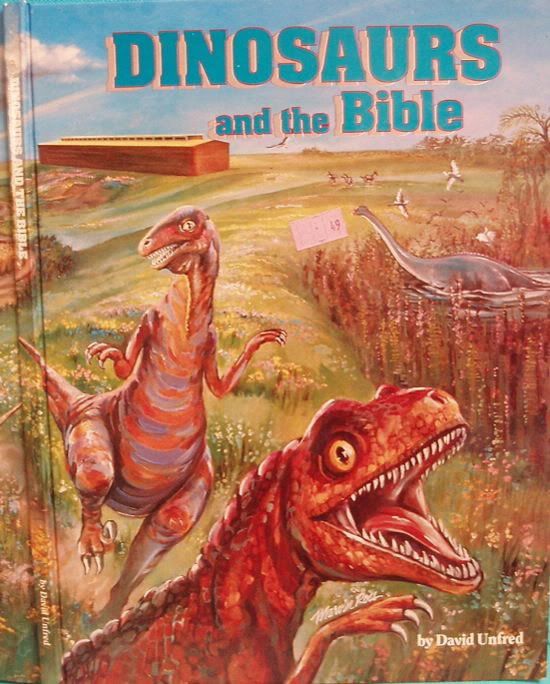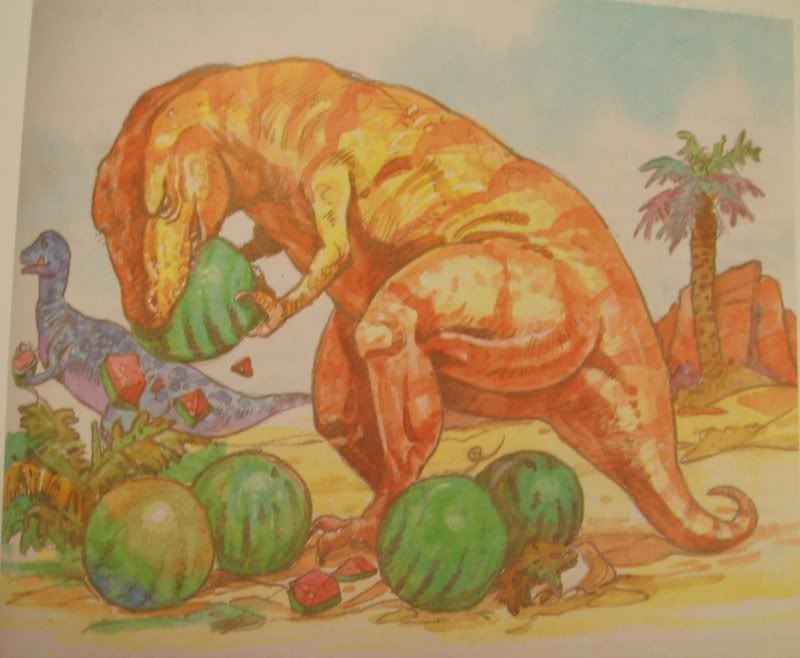 I wish I could knit. If I could, I'd knit this dissected frog pattern by The Crafty Hedgehog on Etsy.
I wish I could knit. If I could, I'd knit this dissected frog pattern by The Crafty Hedgehog on Etsy.
31 March 2008
Knit Dissected Frog
Posted by
Amy
at
5:07 PM
0
comments
![]()
View of the Environmentalist
When I tell people outside of science that I'm in the department of Ecology and Evolutionary Biology, one of the most common follow up questions goes something like, "So, does that mean you're into all that green stuff?".
My guess is peoples' view of "environmentalists" are not too far off from the views in this humorous piece by George Motisher over at the Science Creative Quarterly.
Posted by
Amy
at
12:18 AM
1 comments
![]()
Labels: internet
28 March 2008
I Heart Guts

Well, if you thought plush microbes were cute, they are making plush organs over at I Heart Guts (as well as T-shirts and stickers).
Pictured above are a uterus, pancreas (top), gall bladder (purple) and the blue wrinkly guy is a brain. Their expressions just make me smile. I might not buy a plush, but I'm ordering the assorted sticker pack. I Heart Guts also works with transplant and health organizations to raise funds. So while they might be cute, they're also used to promote great causes.
I might not buy a plush, but I'm ordering the assorted sticker pack. I Heart Guts also works with transplant and health organizations to raise funds. So while they might be cute, they're also used to promote great causes.
Posted by
Amy
at
6:05 PM
0
comments
![]()
Widow's Peak
 This week in lab we were teaching about Mendelian genetics. Part of the lab involved students seeing if they had several traits that are inherited by just one gene. For example, the ability to roll one's tongue is dominant (while non-tongue rolling is recessive) As a child I was mocked by both my sister and Dad who both can roll their tongues while I cannot.
This week in lab we were teaching about Mendelian genetics. Part of the lab involved students seeing if they had several traits that are inherited by just one gene. For example, the ability to roll one's tongue is dominant (while non-tongue rolling is recessive) As a child I was mocked by both my sister and Dad who both can roll their tongues while I cannot.
One of the other traits was the presence of a widow's peak (which is dominant to a straight hairline). Eddie Munster is a great example of a very drastic widow's peak.
Widow's peak is such an intriguing name and it got me thinking about the origins of that name. The Word Detective had this to say on the matter:
"Despite its name, a "widow's peak" is not a sign of age, although as one's hair thins with the passing seasons it may become more noticeable. But it's young women, if one believes the legends, who should beware of developing a "widow's peak." According to English folklore, a "widow's peak" indicates that the woman is destined to outlive her husband and thus become a widow. (The same principle applies, presumably, to men with "widower's peaks.") And if that weren't bad enough, there are things called "widow's locks," tiny tufts of oddly growing hair that can appear anywhere on your head and presage the same fate. "Widow's peak" first appeared in written English around 1849, but it's probably much older than that."
 Take Our Word for It also adds that widows used to wear a distinctive hood with a pointed piece in front, called a biquoquet (or widow's hood). The only example of this headgear I could find by searching around was this painting of Marie Antoinette from about 1795. This does look just like a widow's peak so I see the connection. It seems only logical that people noticed the connection and the superstition then arose.
Take Our Word for It also adds that widows used to wear a distinctive hood with a pointed piece in front, called a biquoquet (or widow's hood). The only example of this headgear I could find by searching around was this painting of Marie Antoinette from about 1795. This does look just like a widow's peak so I see the connection. It seems only logical that people noticed the connection and the superstition then arose.While I don't think most people today are aware of the superstition, several of my students did seem a little embarrassed to admit they had one. I've always liked my peak, but I did have a roommate freshmen year in college who would pluck and shave hers off (for aesthetic reasons and not out of fear of becoming a widow).
Posted by
Amy
at
1:04 PM
3
comments
![]()
Labels: musings
26 March 2008
Elephants Filming Tigers
I am always amazed at how smart animals are.
The BBC is airing a series called "Tiger - Spy in the Jungle" and in order to get good close up shots of secretive tigers, they trained elephants to carry cameras. Humans have trained elephants to do many tasks, but camera wielding is a new one on me. They also had motion sensing cameras set up to look like rocks and logs. Again, the animals were smart and were totally not fooled, you can watch videos of animals (tigers and monkeys) investigating the cameras over here.
This is set to air on BBC One this week, but I really hope this makes it to American TV as well. David Attenborough and tigers and elephants, oh my.
Posted by
Amy
at
3:53 PM
0
comments
![]()
12 March 2008
T. rex ate giant melons
 On a recent trip to a Salvation Army thrift store, I found a humorous yet disturbing book - Dinosaurs and the Bible by David Unfred. The foreword reads:
On a recent trip to a Salvation Army thrift store, I found a humorous yet disturbing book - Dinosaurs and the Bible by David Unfred. The foreword reads:
"Dinosaurs! Children love them, but all too often stories about dinosaurs are used to lure young people away from confidence in the Bible."The book tries to deny evolution and geology and instead asserts that
"There is only one way that we can know anything for sure about the 'prehistoric' past - from an eyewitness account! Someone who was there has to tell us what happened. God, Himself, is our best eyewitness."For those of you who learned about dinosaurs scientifically and are curious, the following is what kids are learning about dinosaurs from this book and I guess also from the Bible. Dinosaurs were made on the sixth day, along with all other land animals. Two of each kind of dinosaur were on Noah's ark during the flood (how they all fit is beyond me). All the fossils we see today were deposited during this flood. Dinosaurs, once disembarking the ark, might have then died due to cold weather, lack of food, and hunting by people. Continental drift doesn't occur, and the reason we see dino fossils in polar areas is just because the earth was a lot warmer before the flood. Dinosaurs and people lived at the same time and that's why we have stories about dragons. If you wanted to find a living dinosaur today, the African Congo seems to be the place to look as there have been sightings of dino-like creatures.
 My favorite assertion, because it's just so ridiculous, is in Appendix A. In it the author claims that since in the Garden of Eden all the animals ate plants that means that dinosaurs, even Tyrannosaurus rex were vegetarians (at least in the beginning). This claim comes with a hilarious illustration of T. rex chomping down on a giant watermelon clutched in his tiny arms. While there might be some debate over if T. rex was a pure predator or scavenger, I don't think any scientist would ever say the T. rex was adapted to eating melons. And if all animals started eating plants does that mean meat eating animals that we see today have adapted and even evolved to eat meat? Blasphemous!
My favorite assertion, because it's just so ridiculous, is in Appendix A. In it the author claims that since in the Garden of Eden all the animals ate plants that means that dinosaurs, even Tyrannosaurus rex were vegetarians (at least in the beginning). This claim comes with a hilarious illustration of T. rex chomping down on a giant watermelon clutched in his tiny arms. While there might be some debate over if T. rex was a pure predator or scavenger, I don't think any scientist would ever say the T. rex was adapted to eating melons. And if all animals started eating plants does that mean meat eating animals that we see today have adapted and even evolved to eat meat? Blasphemous!There is so much wrong with this book, and so much glossed over because there is no biblical explanation, it is just so funny. I could go on for a long time, but in summary to refute the points above scientifically: Dinosaurs roamed the Earth from the late Triassic (about 230 million years ago) to the end of the Cretaceous period (65 million years ago) and all, except for ancestors of modern birds and reptiles, died in the Cretaceous-Tertiary extinction event. One flood like event could not account for the layers of fossils of various ages that we find. Dinosaur evolution responded to changes in vegetation and the location of continents. In the late Triassic and early Jurassic, the continents were connected as the single landmass Pangea and by the early Cretaceous the ongoing breakup of Pangea led to dinosaurs differentiated by landmass. The first members of the genus Homo first arose about 2.5 million years ago, long after dinosaurs were extinct.
The best $0.49 I've spent for laughs and also to prevent others from buying and believing its claims. It's too bad I don't believe these bible stories, riding a melon eating T. rex would be a lot of fun.
Posted by
Amy
at
11:24 PM
6
comments
![]()
07 March 2008
Grow your own Lotus
 I just saw this product over at Urban Oufitters, a "Grow Your Own Lily Pad" kit from DuneCraft. The product description is as follows:
I just saw this product over at Urban Oufitters, a "Grow Your Own Lily Pad" kit from DuneCraft. The product description is as follows:
"Grow your own giant flowering lily pad! Truly amazing, this type of lily pad can grow in up to four feet of water, can spread to take up large amounts of a shallow pond, and each pad can grow as large as two feet wide! This fantastic plant also has the largest flower of any plant in North America! The light yellow flowers even smell good! Plants sprout and grow in water! Just drop your seeds in the included bowl (supply your own water...) and watch in awe as they sprout in less than two weeks! Roots will start forming a couple of weeks later, and before you know it, you will see your own Lily Pads popping out!"
 Based on the description of having light yellow flowers and looking at the seeds, this has to be seeds of Nelumbo lutea, the American lotus. The picture to the left is a close up of the inside of a N. lutea flower I saw while in Florida.
Based on the description of having light yellow flowers and looking at the seeds, this has to be seeds of Nelumbo lutea, the American lotus. The picture to the left is a close up of the inside of a N. lutea flower I saw while in Florida.Lotus leaves are easily distinguished from other water lilies because they are entirely circular and do not have a notch where the petiole attaches (so the drawing on the box is not accurate). They do have large flowers, about 6" wide, but I have no idea if this is actually North America's largest flower like they claim (I did find one site that claims this).
 ...
...
(Left: Nelumbo leaves, Right: Nymphaea leaves)
I'm tempted to buy one just to see if this is easy as they claim, especially just using the supplied blue decorative rocks and no soil.
Posted by
Amy
at
10:49 AM
0
comments
![]()
Labels: aquatic plants, plants, products
04 March 2008
Botanical Pillows
Just a quick entry about botanical throw pillows I've seen for sale lately in catalogs. The first set from West Elm look like pressed algae specimens, while the last two from CB2 are appropriately titled Aloe and Asclepias.


Posted by
Amy
at
8:35 PM
0
comments
![]()


